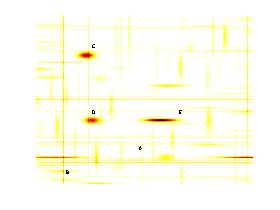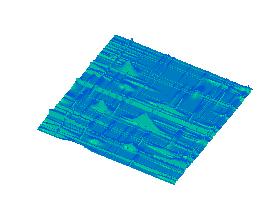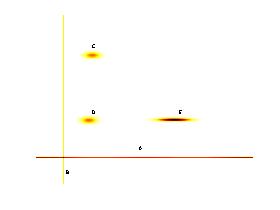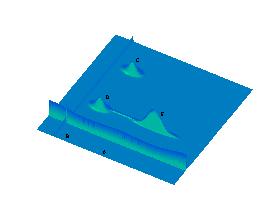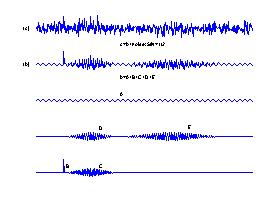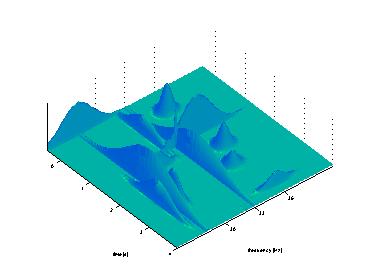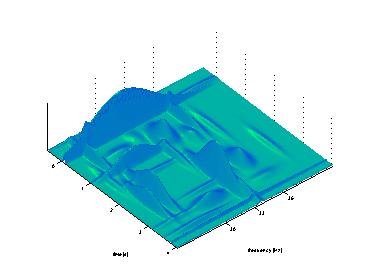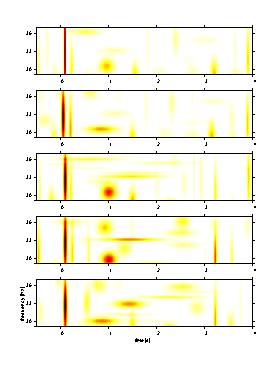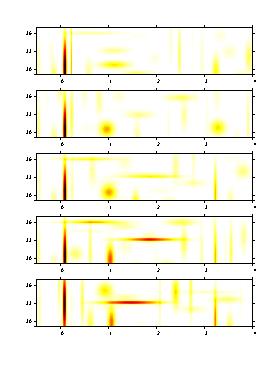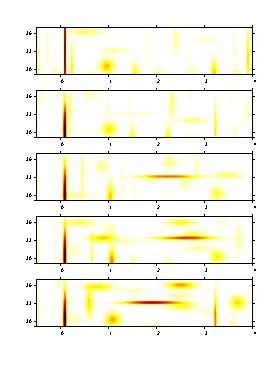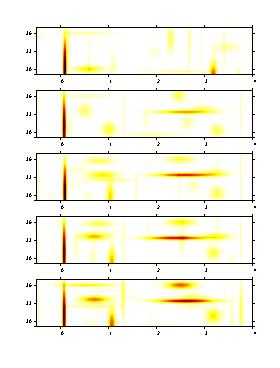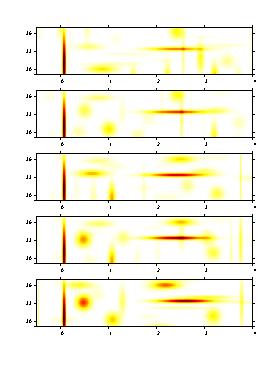|
The above plots present changes of the response: in the time-frequency plane,
and in relation to the topographic position. The response undergoes progressive topographic
changes not only in its overall amplitude, but also in its temporal structure. In the
anteromedial positions (top left) a small response becomes just visible between 0.5 and 1.5
seconds after stimulus onset.
Progressing across diagonal of the electrode array (2,2), (3,3)
the main part of the response both enlarges and occurs later in the stimulus period, while in
(3,3) it can be observed forming just after stimulus onset.
|
In the most posterolateral channels
(4,4), (5,5) the response remains consistently large, but also breaks up progressively into two
distinct phases - an early burst of activity lasting about 0.5 seconds and a later sustained
response which is sharply focused on the driving frequency and lasts the entire second half
of the stimulus period. These spatiotemporally diverse patterns presumably reflect the
differential activity of responding neural subpopulations occupying progressively shifted
positions and orientations in SI cortical area 3b and 1.
|
Conclusions
Analysis based on MP algorithm offers time-frequency
representation of high resolution. It makes possible to extract properties of the single
responses. The progressive evolution of the ERP depending on time and topography can be
followed. These properties make MP approach a unique method of the study of evoked
responses.
Acknowledgements
This work was supported by grants DE-07509 and TW-00185 from the NIH.
|
References:
-
S. Mallat and Z. Zhang Matching Pursuit with time-frequency dictionaries, IEEE Trans. Sign. Process., 1993, 41:3397-3415
-
Laboratory of Medical Physics:
http://brain.fuw.edu.pl
|
